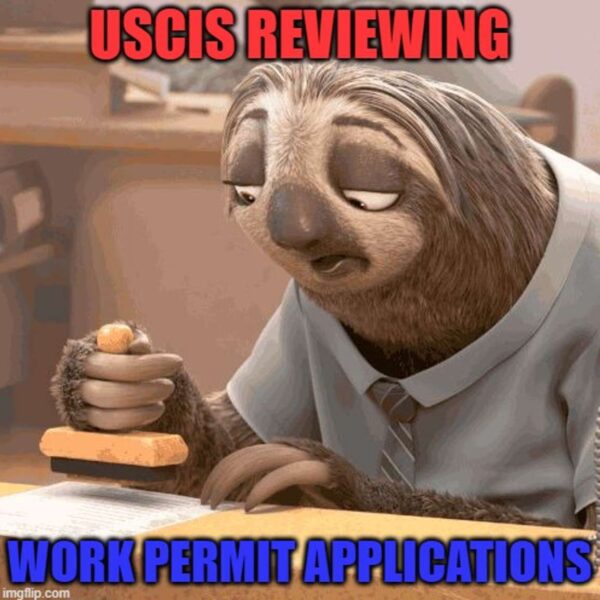
This sponsored column is by Law Office of James Montana PLLC. All questions about it should be directed to James Montana, Esq., Doran Shemin, Esq., and Laura Lorenzo, Esq., practicing attorneys at The Law Office of James Montana PLLC, an immigration-focused law firm located in Arlington, Virginia. The legal information given here is general in nature. If you want legal advice, contact us for an appointment.
Everyone wants to be able to work, but not everyone can work legally.
For most non-citizens, proving that you have the right to work legally means producing a work permit. There’s the rub: getting a work permit can take years, even if you’re eligible for one today. We’ve previously explained the ways that USCIS handles work permit applications; the answer is slowly. But, in a rare bit of good news, USCIS has finally done something to assist applicants in the endless queue.
Previously, USCIS issued an automatic 180-day extension if the applicant was filing her work permit renewal application under certain categories as long as the applicant applied to renew before the current work permit expired. Most applicants can file the renewal application at least 180 days before the expiration of the current work permit.
However, USCIS has not been capable of processing a work permit renewal in 180 days, let alone 360 days. For example, the California Service Center is currently taking 20 months to issue a work permit based on a pending green card application.

USCIS has finally acknowledged that it cannot process work permit renewal applications in a timely manner, and that this harms not only the immigrants waiting for their new work permits, but it also harms U.S. businesses who cannot maintain their workforce due to a lapse in employees’ work authorization.
To keep applicants from experiencing that lapse, USCIS has decided to issue 540-day automatic extensions for certain applicants. Now, as long as an immigrant presents the current work permit and a receipt notice showing that a renewal under the same category was timely filed, the immigrant will be authorized to work an additional 540 days after the expiration on the face of the work permit.
But the question is: is this solution a good one or just a band aid on a bigger problem? We say it’s a band-aid on a total hemorrhage.
USCIS has long struggled to process work permit renewal applications, despite each application only taking about 12 minutes to adjudicate. This rule is meant to be temporary while USCIS tries to reorganize and create more efficient workflows; USCIS hopes to meet that goal by October 27, 2023. However, we believe that the rule will be extended past that date. USCIS not only struggles to adjudicate these applications in a timely manner, but also cannot adjudicate almost every other application in a reasonable amount of time.
For example, as of today, May 12, 2022, the USCIS Potomac Service Center is taking around 11.5 months to issue a renewed green card. The form used to request a renewed green card is only seven pages long, and most applicants pay $540.00 for the application. The same service center is taking 30 months to issue a decision on a family petition filed by a permanent resident on behalf of a spouse or child.
The USCIS Nebraska Service Center is also taking 11.5 months to issue refugee travel documents, an application which is filed on a five-page form and costs most applicants $220.00.
Don’t get us wrong — this temporary extension is excellent for our clients and we are glad that USCIS has done something to alleviate the pressure on work permit applicants. We have had many clients lose jobs due to a lapse in work authorization.
However, we do not foresee any major improvements from USCIS between now and October 2023. Inefficiency and slowness have been issues at USCIS for a long time — certainly for as long as any of the lawyers in our office have been in practice. We hope for the best, but we expect the status quo to continue.
As always, we welcome any thoughts or questions and will do our best to respond.




















